
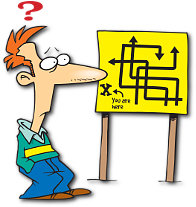 Here we offer some quick answers to common questions about mind mapping and the Mind Map Mad web site.
Here we offer some quick answers to common questions about mind mapping and the Mind Map Mad web site.
We tried to keep most of our responses short and to the point* because…
a) Brief is beautiful
b) We value your time
c) Ask (Google) and you shall receive
Hey, come back! Where’d you go? OK. Now read the Mind Map Mad FAQ for the real deal…
And if you have a specific question for us, just fill in the form at the bottom of the page. Map on!
*We didn’t succeed.
![]()
![]()
![]()
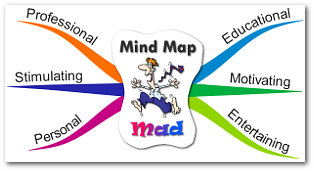 A mind map is an effective and creative way of organising information or ideas on paper, a computer or a mobile device. So what is mind mapping? It’s what you do when you create mind maps – simple!
A mind map is an effective and creative way of organising information or ideas on paper, a computer or a mobile device. So what is mind mapping? It’s what you do when you create mind maps – simple!
A mind map typically has:
♥ a clear central image
♠ key words linked together
♦ images and colours
 ♣ a unique and pleasing structure
♣ a unique and pleasing structure
It looks a bit like a spider, with its legs (the branches) radiating out from its body (the central idea).
 Mind mapping is a powerful tool for stimulating the imagination and improving results when:
Mind mapping is a powerful tool for stimulating the imagination and improving results when:
♥ brainstorming new ideas & problem solving
♠ taking quick notes during lectures & meetings
♦ analysing and organising complex situations
♣ planning projects & presenting information
♥ studying subjects & mastering new skills
Mind mapping has been successfully employed for decades by:
♥ countless international companies
♠ thousands of educational establishments
♦ millions of pupils and students
♣ families and individuals worldwide
Here are some of ThinkBuzan‘s clients, who use their techniques in conjunction with the powerful iMindMap mind mapping software (as do we):
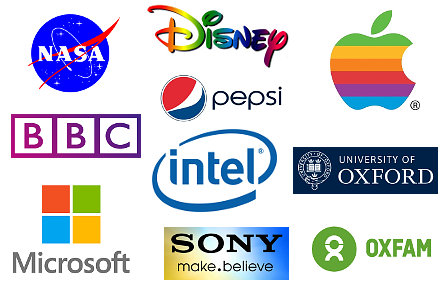
The official line as to why mind mapping is a powerful thinking tool is that our minds store stuff similarly to the way a mind map looks: through limitless connections radiating out from info-nodes, linking up everything we know in an infinite number of ways. Non-linearly, in other words.
And I think that’s right. I prefer to take a more personal angle though.
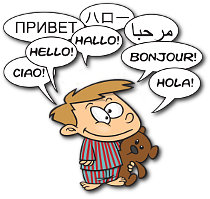 The brain is a phenomenal data processing and learning machine. It relentlessly takes in, analyses and stores an unimaginable amount of information throughout our lives. Its sensors for detecting what’s going on around it are sight, sound, smell, taste and touch.
The brain is a phenomenal data processing and learning machine. It relentlessly takes in, analyses and stores an unimaginable amount of information throughout our lives. Its sensors for detecting what’s going on around it are sight, sound, smell, taste and touch.
Children are the ultimate natural learners. By the age of five a child will have effortlessly mastered its mother tongue, possibly several. All without a single pronunciation lesson or grammar exercise.
Adults, on the other hand, are practically incapable of repeating such a feat with a new language.
So what is the secret ingredient – this magical capacity to learn practically anything, which we tragically lose as we grow up? It’s simple. You just have to look at how a young child actually learns:
⇒ through hearing colourfully illustrated stories told in their mother’s arms
⇒ by singing and acting out nursery rhymes
⇒ when experiencing nature during walks and talks with dad and the dog
⇒ as a result of funny happenings at the dinner table
⇒ during life lessons about sharing, not fighting, saying please and thank you...
And not a long, boring, black and white list in sight. How things change.
 Unfortunately, for whatever reasons, at some point learning gets serious and regimented. Learning is a ‘serious’ business. Careers depend on exam results. And colours, pictures, spontaneity and above all fun are certainly not serious. So we banish them.
Unfortunately, for whatever reasons, at some point learning gets serious and regimented. Learning is a ‘serious’ business. Careers depend on exam results. And colours, pictures, spontaneity and above all fun are certainly not serious. So we banish them.
The problem is, this doesn’t change the brain’s preferred way of learning one iota. Not a jot. It’s still desperately seeking the love and laughter, the fun and freedom of its early days, in order to learn to the best of its ability, which is, as we said, huge.
So, to get back to the whole point of this section, mind maps allow us to enjoy learning in some of the ways we did as children; with colours, images, spontaneity and humour.
Which method would you prefer, really?
Personally, no. Others believe they can.
I prefer to use my own personal experience and common sense:
We have the creativity drummed out of us as we go through school.
The pressure of exams and the need to succeed and keep our parents happy kicks in with a vengeance in our teenage years.
 We are taught to record things unimaginatively in colourless, uninspiring lists, killing much of the pleasure and satisfaction to be had from learning something we are passionate about.
We are taught to record things unimaginatively in colourless, uninspiring lists, killing much of the pleasure and satisfaction to be had from learning something we are passionate about.
I was slapped around the head once by my art teacher as a child and called an idiot who never listens.
Why? Because instead of drawing a crumpled coke can in the sad shades of grey demanded, I had excitedly produced a rainbow-coloured effort with my brand new birthday pencils. She tore my beautiful picture in half in front of the other kids and threw it in the bin. I was 11.
Hey! Guess what? Adults are just… big kids.
Every grown-up has a pent-up child inside, twisting and turning and bursting with creativity and crazy ideas and fun. That child is desperate to escape the constraints and straight-jackets of serious society and what we’re ‘supposed’ to do… and not do, as we go through our lives.
Even as adults, we crave stimulation through all our senses.
Just think about what we do for ‘entertainment’ when we are not being forced to work for a living:
♥ We watch exciting fantasy films
♠ We listen to classical music or heavy rock
♦ We read a good novel in a comfy chair
♣ We have a lovely meal out in good company
♥ We go to an abstract art exhibition
♠ We watch funny animal videos on YouTube
♦ We take pottery classes or do dance lessons
♣ We go for a walk in the countryside
 Did you spot any boring, depressing black and white lists in all that?
Did you spot any boring, depressing black and white lists in all that?
As far as I’m concerned, many of our revered ‘traditional’ learning methods should be unlearned as quickly as possible.
And replaced with fun, stimulating, motivating, creative and highly personalised techniques instead.
Let’s give the brain a break. Let’s give it some mind maps to wrap its neurones around. For example.
 Mind maps, in one form or another, have been around for centuries.
Mind maps, in one form or another, have been around for centuries.
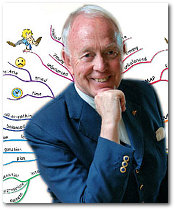 There are records of 3rd century thinker Porphyry of Tyros using them and Leonardo da Vinci was also a fan.
There are records of 3rd century thinker Porphyry of Tyros using them and Leonardo da Vinci was also a fan.
More recently, British television presenter and author Tony Buzan popularised them and formalised some ‘rules’ based on his research into the brain and how we learn.
Buzan also coined the term ‘mind map’, and mind mapping is now the widely accepted name for this technique.
Now that we’ve answered the popular question – What is mind mapping? – it’s time to answer the other biggie: What is Mind Map Mad and what do you do, exactly?
Mind Map Mad is a professional mind map training company and web site with a personal, friendly approach to business.
On our Mind Map Mad web site we offer valuable mind mapping services and rich content in an interesting, entertaining way.
We offer professional, ThinkBuzan-certified mind map training for businesses, educational establishments and individuals.
The web site is the creation of Sab Will, a Brit living in France with over 20 years’ experience training French business people in a wide range of contexts.
Sab works alongside other ThinkBuzan-certified Mind Mapping and iMindMap Licensed Instructors (TLIs) around the world to provide professional mind map training wherever there is a demand for it.
 We specialise in providing intensive, results-focused one-day training courses and hands-on workshops to companies and educational organisations.
We specialise in providing intensive, results-focused one-day training courses and hands-on workshops to companies and educational organisations.
Our most popular courses are:
♥ A Practical Introduction To Mind Mapping
(ThinkBuzan certified)
♥ Intensive iMindMap Software Training
(ThinkBuzan certified)
♠ Mind Mapping For Companies
♠ Mind Mapping For Professionals
♠ Mind Mapping For Maximum Success
♦ Mind Mapping For Teachers
♦ Mind Mapping For Students
♣ Mind Mapping For Personal Development
An excellent question. With a straightforward answer.
We guarantee that all of our professional mind mapping and iMindMap training courses will be:
⇒ Led by an experienced business professional
⇒ Given by a fully qualified ThinkBuzan Licensed Instructor (TLI)
⇒ Closely tailored to your industry or area of interest
⇒ Highly practical and ‘hands-on’
⇒ Assessed for on-going effectiveness
⇒ Stimulating, surprising, and often paradigm-shifting
⇒ Dynamic, inspiring, motivating and great fun
Your main trainer, Sab Will, is an energetic, friendly and positive professional who is committed to giving you a valuable and memorable experience discovering this powerful results-focused business and educational tool.
This depends on the package chosen.
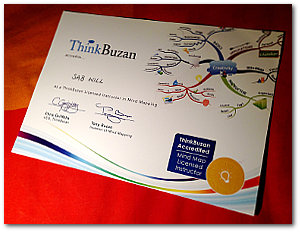 Our basic day rate starts at €2300 for up to eight course participants. Discounts are available when more than one course is booked at the same time.
Our basic day rate starts at €2300 for up to eight course participants. Discounts are available when more than one course is booked at the same time.
For each of the following full-day courses we also offer an optional official ThinkBuzan certificate (€45 per certificate) upon successful completion:
♥ A Practical Introduction To Mind Mapping
⇒ Official ThinkBuzan Mind Mapping Practitioner Certificate
♥ Intensive iMindMap Software Training
⇒ Official ThinkBuzan iMindMap Software Practitioner Certificate
 In addition, we offer each course participant who does both the above courses the full iMindMap 8 (Ultimate Version) software (worth €180) at a 10% discount in order to be immediately productive on finishing the course.
In addition, we offer each course participant who does both the above courses the full iMindMap 8 (Ultimate Version) software (worth €180) at a 10% discount in order to be immediately productive on finishing the course.
The ThinkBuzan company fully supports its iMindMap software directly on all technical issues.
As a valuable Mind Map Mad client you also benefit from our personalised Advisory Service for three months after the end of your training course.
Whether you’re still asking ‘Sorry, what is mind mapping again?’ or ‘How exactly do you export a mind map to a jpeg format at a customised resolution?’ we are here for you.
Please feel free to ask as anything regarding the effective use of mind mapping in the day-to-day running of your business.
All of our basic training modules are one day courses. Half day versions are also available, in the context of a series of complementary modules.
Our basic Two-Day Starter Package consists of:
♥ Day 1: A Practical Introduction To Mind Mapping
(ThinkBuzan certified)
♥ Day 2: Intensive iMindMap Software Training
(ThinkBuzan certified)
Once your trainees have completed the above two modules, they can go on to do any of our more specialised modules at a time and rhythm of their choosing.
All of our training courses include the following:
⇒ A dedicated trainer for the duration of the course
⇒ All course materials, handouts and photocopies
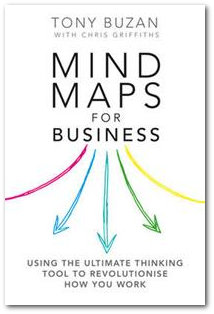 ⇒ Lively introductions to the topics, relevant, personalised examples and plenty of hands-on experience for all participants
⇒ Lively introductions to the topics, relevant, personalised examples and plenty of hands-on experience for all participants
⇒ A complementary copy of Tony Buzan’s ‘The Mind Map Book’ or ‘Mind Maps for Business’ if required
In addition we also provide a lot of added value in the form of:
⇒ A set of ready-prepared iMindMap mind maps for a wide variety of professional tasks to start getting productive immediately
⇒ Access to a dedicated mind mapping forum to share mind mapping advice and knowledge with a community of mind mappers worldwide
⇒ A structured follow-up process including tips and ideas to provide inspiration and ensure that course participants remain motivated and excited about mind mapping after their training course
Yes. Close personal attention is essential for all course participants to fully benefit from the training.
Therefore, our professional mind map training courses are normally limited to eight trainees per session.
Please discuss your personal requirements with us to make sure you get the best possible mind map training experience.
Yes, absolutely.
In fact, ALL our training courses are adapted to meet your company or organisation’s precise needs.
You let us know exactly what you want, and we will create a tailor-made training plan based on that.
What, you mean like this? ⇒
 Well…
Well…
We use lots of images and lively colours on our mind map training web site for two very specific reasons.
1) It’s fun
2) The brain loves ‘fun’
Seriously!
The brain works better when it’s being stimulated through a variety of senses, including the sense of humour and the sense of pleasure, if you will allow us that!
I’ve tried to explain some of the reasons why I think this is true earlier in this FAQ, but here’s a concrete example.
Look at the three examples below. Which do you find the most interesting?
The Paris metro is one of the most complex but also one of the most efficient urban transport systems in the world.
For over 20 years I have used this labyrinthine network on an almost daily basis, and it has truly become an integral part of me and my life.
I think if you chopped my hand off at the wrist you would see the word metro running through me in all the glorious colours of the different train lines like a stick of Brighton Rock!
 The Paris metro is one of the most complex but also one of the most efficient urban transport systems in the world.
The Paris metro is one of the most complex but also one of the most efficient urban transport systems in the world.
For over 20 years I have used this labyrinthine network on an almost daily basis, and it has truly become an integral part of me and my life.
I think if you chopped my hand off at the wrist you would see the word metro running through me in all the glorious colours of the different train lines like a stick of Brighton Rock!
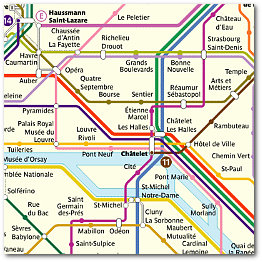 The Paris metro is one of the most complex but also one of the most efficient urban transport systems in the world.
The Paris metro is one of the most complex but also one of the most efficient urban transport systems in the world.
For over 20 years I have used this labyrinthine network on an almost daily basis, and it has truly become an integral part of me and my life.
I think if you chopped my hand off at the wrist you would see the word metro running through me in all the glorious colours of the different train lines like a stick of Brighton Rock!
I hope you found the third example the most interesting! A black and white picture is better than no picture, but a coloured one is the best of all. Shall we go back to black and white television, anyone?
Other less obvious reasons the above text might be engaging include that fact that it’s personalised – I really do take the metro a lot and it really has become a part of my life!
 The text also refers to the rainbow of hues of the metro map – appealing to the senses – in an original way which can be confirmed by checking the accompanying image. Without the picture it’s just blah-blah. Enough said!
The text also refers to the rainbow of hues of the metro map – appealing to the senses – in an original way which can be confirmed by checking the accompanying image. Without the picture it’s just blah-blah. Enough said!
That’s kind of the point, but I know what you mean.
However, I hope you can see some sense in what I’m saying, and rest assured, our training is extremely professional, but no, not always totally ‘serious’ – we have a lot of fun! I hope you’ll try us out – I know you’ll like it.
Yes! I love wise words and I’ve played around with several.
I’ve even started a collection. Choose your favourite…

I’m very glad you asked!
We created The Mappy Awards to highlight and honour excellence in mind mapping around the world.

The focus is on mind maps created using software, although we are about to introduce a new ‘Handmade’ category shortly!
We are looking for amazing mind maps on any topic which follow both Tony Buzan’s original ‘rules’ as well as our own P–E–R–F–E–C–T Mind Map principles. Find out more here.
As there is currently only one piece of software we know about which allows true creativity and ingenuity in accordance with all of these rules and principles, our winning mind maps tend to have been created using this product; namely – did you guess? – ThinkBuzan’s iMindMap.
We are biased, as far as mind mapping software is concerned, we admit it! But one of the main reasons I love iMindMap is the freedom it gives you to dream up and realise your own unique creations. If you don’t like the way a branch is bending… well, bend it the other way, why don’t you! With iMindMap you can.
In the end, you imagination is your only limitation, which is just as it should be.
There are monthly and yearly winners, and the categories are:
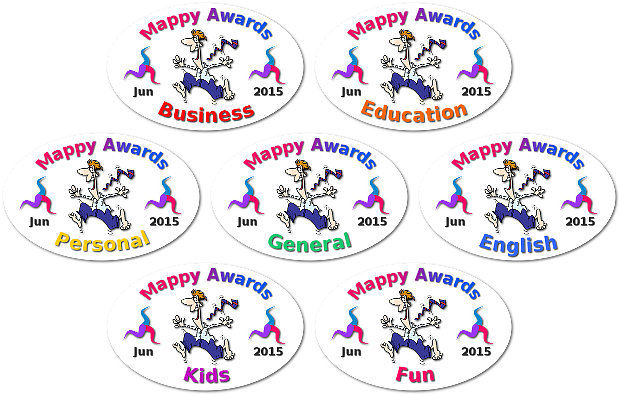
And yes, those are glorious rainbow colours, just to spite my old art teacher, for those of you who have been avidly devouring this fabulous FAQ from the beginning!
Oh, I said eight categories, and the eighth will be the new ‘Handmade’ category featuring some of the most fantastic hand-drawn mind maps we come across on our virtual travels.
Now I just have to decide on the colour. Brown, maybe? What else is there? Maroon? Girly pink? Yukky olive? Turquoise? Grey?! Oh dear, decisions, decisions…
Check out our extensive Mappy Awards section for lots more information 😀
iMindMap is a leading mind mapping software application which lets you produce beautiful mind maps easily and naturally.
It was developed by ThinkBuzan, whose president, Tony Buzan, popularised mind maps as we know them today. It therefore follows his mind mapping principles and ‘rules’ more closely than any other software.
In addition, the latest version, iMindMap 8, includes many excellent features such as the innovative brainstorming view, the ultra-slick presentation mode and many more.
There is an entire section on the Mind Map Mad web site devoted to iMindMap, including an exclusive 10% discount for our visitors, so check that out if you want to know more.
We use iMindMap exclusively here at Mind Map Mad.
This is because iMindMap is the only product currently available which allows us to produce amazing mind maps for business, education or pleasure, on a computer or mobile device, which meet all our criteria for what makes a truly great mind map.
 If you are interested in discovering what these are then please visit the Mind Map Mad ‘Mappy Awards’ section to find out more.
If you are interested in discovering what these are then please visit the Mind Map Mad ‘Mappy Awards’ section to find out more.
You also just have to make decisions in life and then get on with it. The more time you spend dithering and umming and ahhing and sitting on the fence and weighing up all the possible options, the less time you spend actually creating great content.
I’ve chosen a great application I was attracted to from the moment I saw an amazing piece produced using it. I was hooked! Now I concentrate on creating the most useful and inspiring mind maps I possibly can. And leave the umming and ahhing and comprehensive comparing of pros and cons and innovative features to others.
I want as many people as possible to get on board using this great software.
One of the ways I try to do this is by showcasing great mind maps made with iMindMap from around the world. I also produce my own efforts and chat about them on the Mind Map Mad blog to hopefully inspire people to get mapping in their own right.
Another way of doing this is by passing on a discount I get from ThinkBuzan as a qualified ThinkBuzan Licensed Instructor (TLI) in mind mapping and iMindMap.
I don’t actually made any money on this deal, but that’s not how I want to earn my living anyway. So I use this offer to attract people into the Mind Map Mad fold, get them involved in the community and hopefully go deeper into some from of mind map training at some point.
10% off iMindMap 8 is a great deal, by the way, and you don’t often see a discount like this, not to mention the extras we offer as part of it, so click the iMindMap Download Now button above to check it out – and welcome to the club!
OK, OK, it’s coming, hold on…
I know I’ve got it here somewhere…

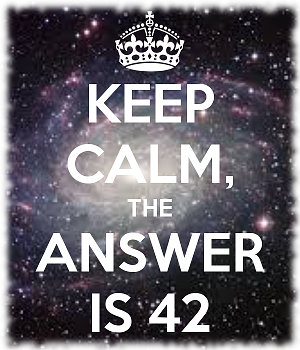
You’ve got to do something in life, to get you through the day, haven’t you?
If you’re lucky, you do something that is useful to others, satisfies you on some level, earns you enough money to live on and is fun.
I suppose the ideal thing to do for a living would be something you would do even if you weren’t being paid to do it.
My approach is to try very hard to do something which really interests me in the hope that I can be useful to others.
Obtaining personal satisfaction, earning enough to live on and having an enjoyable time doing it would be very nice fringe benefits.
![]()
There are a huge number of things you could do in life. Everything’s a choice and there’s always an opportunity cost.
If you do one thing you don’t do another. If I watch the match I don’t mow the lawn or get the garage sorted out.
If I spend my time creating on-line English lessons and mind mapping web sites, I don’t learn to speak Spanish or get rid of my middle-age spread.
![]()
After years of reflection, I’m starting to realise some fundamental truths.
For example, there are simply too many things you could do in life to ever be able to try them all.
Never mind get any good at them.
You have to make choices.
![]()
One of the creeping realisations some people have as they get older is that it would be nice to actually be known as someone who is really rather good at something, anything.
The thing is, to achieve that status, you generally have to practise that thing for a very long time.
And in practising something for a very long time, you forego the opportunity of doing lots of other equally interesting things.
![]()
It’s always with a touch of ironic sadness that I watch a top level sportman or woman ecstatically celebrating their latest victory.
Like Serena Williams, the tennis player, winning her 20th ‘Grand Slam’ victory at Rolland Garros in Paris yesterday. She loves us all so very much, she told us.
Or the Barcelona football team, who won a fifth Champions League trophy last night. Revelling in the ‘glory’ of those who think that’s a Good Thing. My girlfriend and father-out-law jumped up and down screaming with pleasure. I watched.
![]()
Ironic sadness? Well, yes. Think of all the other amazing, but less publicised things all those players could have done with their lives.
And sadness for all those who devote a large part of their existence deciding to be happy or sad depending on whether such-and-such an obscenely rich football player kicks a little inflatable globe into a net.
And finally sadness for those who perform truly heroic yet largely unrecognised acts, such as saving people from burning buildings or holding the hands of the dying or spotting the kid who is struggling and singling them out for praise.
![]()
These personal ‘victories’ are important for some and mean something to many. But to have devoted your entire life to hitting or kicking a bouncy ball in a certain way, believing it to be really important, means you haven’t done a ton of other stuff. Things are only important because you’ve decided to think they are, or because others do.
Imagine if Barcelona and Juventus duly clocked-in for the final in Berlin and no-one turned up. Along with the majority of the world’s population, the supporters just happened to decide that it really was time they sorted their garages out, and the TV viewers preferred to watch a light comedy instead. What would those bouncy ball kicking ‘skills’ be worth then?
![]()
Which is all to say that not much we do has inherent value. It’s the value we or others give it that makes it important.
If I create an on-line English lesson that no-one follows, was it worth doing it?
If I post a message about the Mappy Awards and nobody clicks, was it worthless?
And if I spend my life working in a job I hate because someone pays me a lot of money, does that mean I should carry on doing it?
These are all questions which well up as time goes by.
![]()
In the end, I don’t resent world famous tennis players or footballers, but I don’t idolise them either. And I’m happy for them being in the right place at the right time, doing the right thing to give them a pretty good life. Given other times and different circumstances, they would be just like anyone else.
I realise that what I’m doing myself may or may not be extremely valuable to between zero and 7 billion people. And you just have to roll with that fact.
I also believe that doing something reasonably original with passion helps bring meaning to your life. If it does help others so much the better.
![]()
For me, creating on-line English lessons and working on my mind mapping site brings me enormous pleasure.
What’s more, I’ve had some signs that a few others (but not everyone) quite like what I’m doing, which is cool.
I believe that the main thing is to have tried to make a difference, preferably a positive one, whatever that difference may be.
So that’ll do for me, for now.
That’s about it, yep.
As I approach my 50th birthday / 1st half century on this planet, you get more and more to wondering what it’s all about.
Some may say it’s about deep and mysterious forces not even worth trying to understand.
 Others claim it’s about absolutely nothing at all.
Others claim it’s about absolutely nothing at all.
I’ll go down the middle path and try to lead a useful and productive life whilst having as much fun as I can.
I understand I can’t do everything and that I need to focus if I want to make some sort of difference.
But I just can’t restrict myself to one narrow field either. Life’s too rich and too short to do that.
In the end I’ll do my best to get on with things and not worry too much.
Of course we all die, but generally not because we lose a job or forget to water the tomatoes. The tomatoes may die, of course, but I’ve heard sun-dried ones taste rather good…
Keep smiling, produce as well as consume (do sport, write stuff, make mind maps), play with children, appreciate nature, realise that most things are probably not as serious as you think and Map On!
[contact-form to=’grimfarmer@yahoo.com; sab@mindmapmad.com’ subject='[Mind Map Mad: Mind Mapping %26amp; iMindMap’][contact-field label=’Name’ type=’text’ required=’1’/][contact-field label=’Email’ type=’email’/][contact-field label=’How Can We Help You?’ type=’textarea’/][/contact-form]
